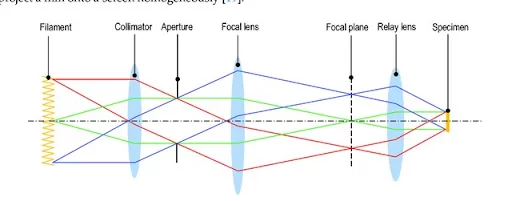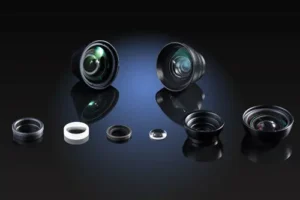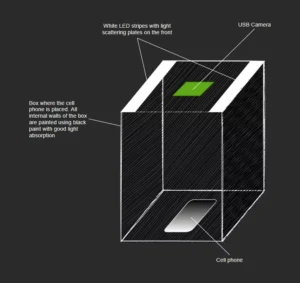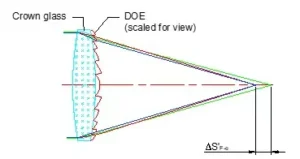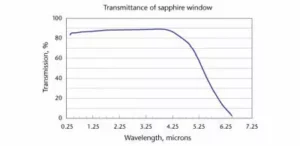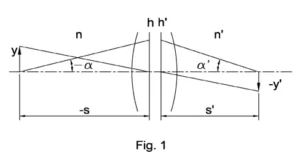When designing any optical system, an optical engineer needs to consider how illumination will be used: specifically, how the illumination could affect the way the image is created. If not carefully designed, some illumination systems may create a kind of vignetting where the illumination will have a higher intensity at the center while decreasing to zero around the edges. Alternatively-as in the case of simple microscopes that are illuminated by halogen bulbs – the microscope can create an image of the lightbulb itself.
In the case of microscope design, the optical engineer’s goal should be uniform illumination across the whole sample. Uniform illumination has the additional advantage of creating higher contrast. One way to create such illumination is by using what is called a Koehler illumination system. To create a Koehler illumination setup, we need two adjustable diaphragms: one near the light source (also called condenser diaphragm or CD) and the other close to the sample (also called field diaphragm).
By adjusting the condenser diaphragm, the optical engineer can modify the sample contrast and depth of field. In addition, we can control the amount of light reaching the sample. The collector lens projects a larger image of the lamp filament where the field diaphragm is placed. By controlling the CD’s aperture, we can control the angular aperture of the light cone. The field condenser (FD) can control the illumination area on the sample.
Because the light source is not focused at the sample, the light behaves as an extended diffused source. The combination of the apertures of both diaphragms determines the numerical aperture of the microscope system. As the CD is increased, the NA also increases thus creating higher resolution on the system.
The image below shows how this Koehler layout looks in practice.
